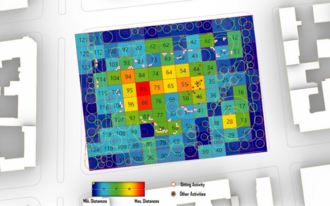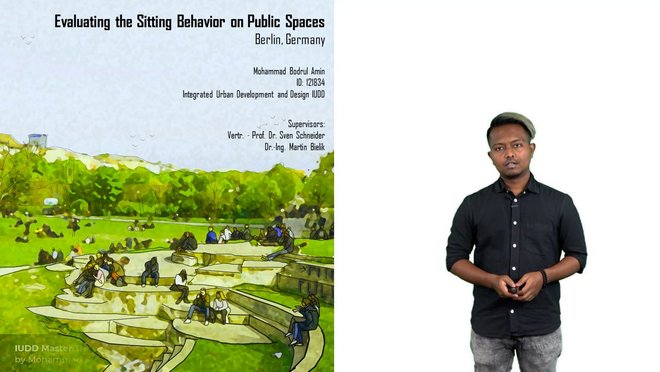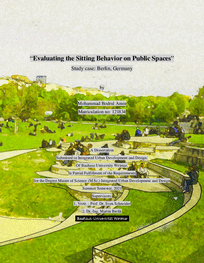
Evaluating the Sitting Behavior on Public Spaces
Master Thesis by Mohammed Bodrul Amin
Study Programme Integrated Urban Development & Design
2021
In this Master Thesis Mohammed Bodrul Amin observes the sitting behavior on three different public spaces in Berlin and develops a method to forecast this behavior using spatial analysis and a decision tree model.

Evaluating the Sitting Behavior on Public Spaces - Mohammed Bodrul Amin (IUDD Thesis, 2021)
Klicken Sie auf den Play-Button, um externe Inhalte von Vimeo.com zu laden und anzuzeigen.
Externe Inhalte von Vimeo.com zukünftig automatisch laden und anzeigen (Sie können diese Einstellung jederzeit über unsere »Datenschutzerklärung« ändern.)
Sitting can be considered as one of the essential stationary activities that occurs in a public place. Thus, understanding people's sitting behavior is the basis for designing public spaces. According to the existing literature,various spatial features significantly impact sitting behavior in public spaces. For a designer the challenging task lies inmanipulating these featuresin a way that promotes sitting and thus enhances the vibrance ofpublic spaces.
Therefore, in this thesis, we present an approach to predict sitting behavior in public spaces. Three public spaces (located in Berlin, Germany) were selected, and contextual data regarding the existing design features were collected. Sitting patterns and activities were recorded on-site three times in three different days for each public space. A representational structure was created to run further analysis on the collected data. Therefore, a grid (with 10 m x 10 m cell size) was considered to aggregate the collected data. Recorded sitting activity and related contextual data were mapped to each grid cell. Moreover, spatial features related to sitting activities such as distances to nearby roads, pavement, and visibility within each cell were computed using parametric analysis tools.
A decision tree method was used to evaluate the impacts of different variables on sitting. The model was trained using the frequency of the sitting activity (target value) and the physical features of the public space (contextual data and computed spatial features) as input variables. The analysis part was conducted in several phases. At first, for each urban park, one aggregated survey data chart was inserted into the model to run the analysis and see how it performs. After that, the data of all the three public places was combined and fed into the model.
The results show the most influential design features and their correlations on sitting activity in public places such as people tend to sit on a bench which is located near to a pavement most of the occasions or directly on the grass with good visible access towards the surroundings. The trained decision tree model can be used as a tool in the design process to get feedback on whether the public place design is suitable for sitting or not. Furthermore, the outcome of this research shows that talking/social interaction is highly related to 'sitting' activities and their influencing factors. So, this research offers a future scope of study on generating active social interaction based on the consequences of sitting activities in public places in the field of urban and landscape planning.

